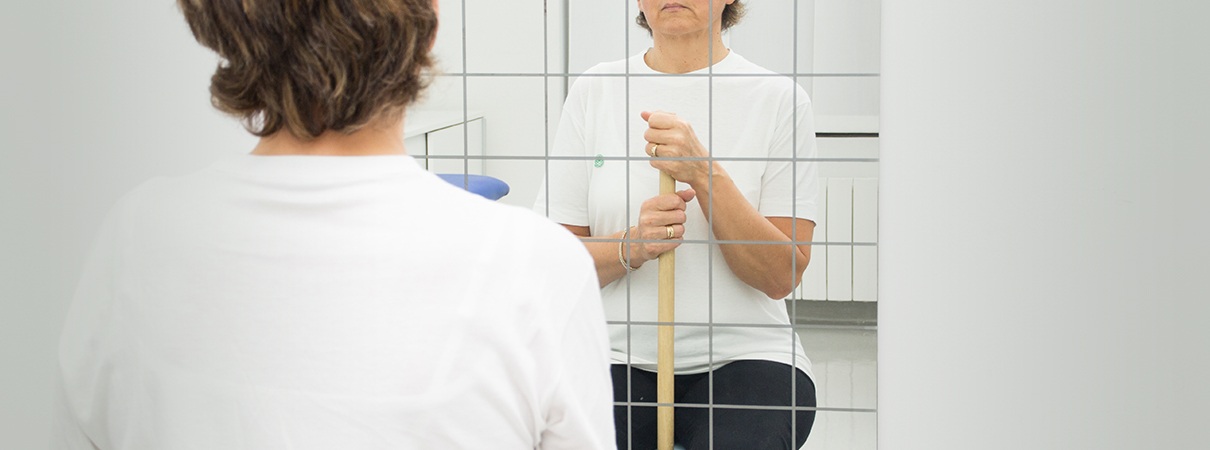When scoliosis treatment comes to an end, the doctor will recommend two things: regular physical exercise and scheduled medical check-ups, whose frequency will depend on the extent of scoliosis.
Scoliosis in adulthood doesn’t stop you from leading a normal life, but that is not to say that you can completely forget about having the condition.
Prevention
Current data on scoliosis in adults tell us that mild curves (measuring less than 30°) generally remain stable.
In such cases, there is usually no need to undertake any specific treatment, and it is enough just to do regular physical activity. However, given that even mild curves can very occasionally deteriorate, if your curve measures more than 20° it is worth having a check-up from time to time (every 5-10 years), purely as a preventive measure.
In the presence of a moderate curve (over 30° but under 50°), the patient’s back should be considered stable until proven otherwise; accordingly, the individual should undergo regular checkups (once a year or at the most every two years), again as a preventive measure.
These should be carried out by a scoliosis specialist who will take the necessary clinical measurements; in this way, X-rays need only be taken around once every five years and the situation will still be effectively monitored.
Should the results of a checkup suggest that scoliosis has deteriorated, it may be useful, to keep the situation under control, to have a plan of specific exercises drawn up by trained experts.
If the curve does worsen, it will do so very gradually, by half a degree or one degree per year, and in women this is usually more likely to happen as they approach the menopause. Another critical time for women is pregnancy, when specific exercises are always recommended.
Adults with severe scoliosis (curves greater than 50°) who have decided not to undergo surgery should be given an exercise plan. Since there is a real risk of such curves worsening, even in adulthood, they must follow the program strictly.
In addition to the risk of progression of the curve, scoliosis is associated with a series of other possible problems: low back pain, aesthetic issues, problems affecting internal organs (these are usually significant only in the case of curves measuring more than 70° and scoliosis diagnosed in early childhood).
Don’t forget to have check-ups
Scoliosis in adulthood can remain perfectly stable and not cause any problems at all. However those with moderate curves should have check-ups every 1-2 years and X-rays every 4-5 years.
Monitoring the condition means implementing the first, and most important, form of treatment there is prevention.
Regular physical exercise
At the amateur level, any sport, practised regularly, is permitted. However, it is important to get the go-ahead from a medical specialist before taking part in competitive sporting activity.
Adults with scoliosis greater than 30° may find that the condition will gradually worsen, since the spine can “collapse” in the direction of the curve, causing it to deteriorate in the long term.
Sport, allowing the maintenance of better muscle tone, is the first factor that can slow this process down.
What is more, a person who keeps physically fit will not be at risk of back pain, and this is true whether or not he/she has scoliosis.
Medical check-ups
It is important to understand that any worsening of scoliosis (the more severe the curve, the more likely this is) cannot be reversed, only prevented. According to the most recent studies, the most harmful thing in adults with scoliosis seems to be the tendency, as the years go by, to assume a forward-falling posture.
Once again, monitoring and timely intervention are crucial: the individual should be monitored to check that this does not happen; if it does, he/she should be given suggestions on how to manage daily activities and specific exercises to do. Once scoliosis has worsened significantly, or the trunk has assumed a markedly forward-bent position, the situation may be irretrievable. Pain, difficulty standing for any length of time, and difficulty walking are the danger signs.
Specific exercises: when they are needed
When scoliosis worsens, sport alone may not be enough.
In an attempt to stabilise the spine and avoid surgery, there are useful physiotherapy exercises, specifically developed for scoliosis, that can be done: it is important to consult an experienced physiotherapist who can prepare a plan of exercises that include a complex curve correction movement.
Patients must periodically perform these exercises and get into the habit of practising this movement until they find themselves naturally assuming and holding this position in their daily activities.
Surgery
Scoliosis surgery is very demanding and the risk of complications is quite high, about 5%.
Its aim is to prevent the condition from deteriorating, but this is achieved at a considerable cost: loss of movement of the surgically treated section of the back.
Chosen only as a last resort in the most severe cases, it is a very invasive therapy but also highly effective: at Isico we refer our patients requiring surgery to high-level specialized facilities.
However, Isico is the ideal place for patients who can or want to avoid surgery, or who at least want to try to prevent it.



